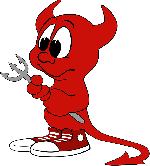B. Psychology should be the study of the unconscious
C. Founded by Freud, who believed that there was conflict among your three personalities:
id: (the "it"), governed by the pleasure principle, the container of inherited psychological energy. It has survival drives such as hunger, thirst and sex.
If you have Netflix and want to take a break and still learn a little about the id, you can watch Episode 1 of the Santa Clarita diet.
People who won't wear masks despite the harm that will do to others are letting their id be in charge.
ego: (the "I"), governed by the reality principle, the center of reason, but not morality.
superego: (the "above me"), governed by the morality principle, represents internalized social standards
D. Weaknesses/Common Objections
Scientific problems:
1. What is the evidence for a powerful unconscious mind? There was very little evidence during Freud's life. Now, we know that nonconscious processes exist, but they often seem to serve what our conscious mind wants. There is little scientific evidence of unconscious conflicts.
2. Is the therapy based on the theory more effective than other therapies? Doesn't seem to be.
